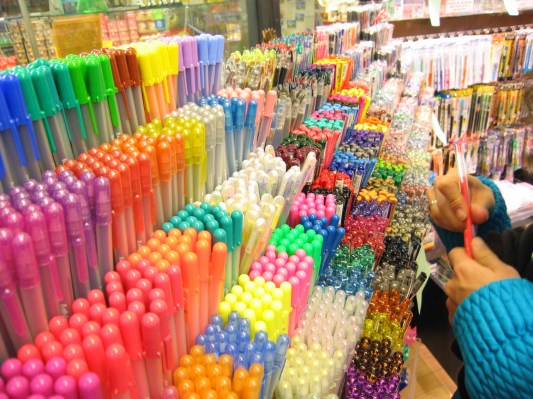This morning brought news of the RETRAKT pen hitting $72,000 on Kickstarter. RETRAKT is a nice-looking pen made of aluminum that looks a little bit like a part that fell off of a space ship. But $72,000 raised? For a pen? What gives?
I think pens, in this case, are a fascinating case study of the value and danger of crowdfunding. I decided to explore what exactly was going on with these instruments and how they can help folks who are looking to crowdfunding for products or, if they are ambitious, to fund projects.
My search quickly led to this seemingly dormant site dedicated to pens on Kickstarter. The creator, a developer named Sean, explained he’s working on new features and is going to add reviews and discussion of pens not on Kickstarter. “Our site/twitter feed is still in its infancy but has begun to generate a good following and response in short time. We’re even starting to hear about projects that haven’t even been launched on KS yet!” he wrote.
I found 185 live and mostly-funded pens on the site compared to 81 iPad cases and 164 iPhone cases. There are a mere 111 Arduino projects. Obviously this represents funded or open projects and isn’t representative of the entire gamut (Kickstarter tends to reward failure with anonymity) but why do so many pens survive?
First, we have to understand the fascination with writing instruments. While I usually only need a pen when I mark up a take-out menu before I order, there is a subset of the Internet that goes batty for nice writing instruments. There are Japanese pen obsessives, pen porn (not really), and even a $6,000 pen designed by Sylvester Stallone. Pens are a commodity item that have been elevated to a collector’s item and item of obsession, on par with high-end watches in terms of items that are very expensive, make little sense to outsiders, and can be either garish or beautiful (or, if you’re Sylvester Stallone, both).
As a watch guy I understand the allure of fancy pens. It doesn’t make much sense, to be sure – fountain pen makers items that have been reduced to penury by commodity Bics and we’re never going to go back to blotters and India ink.
“I think pens have become popular on Kickstarter for a couple of reasons. In the case of the Karas Kustoms projects, they are handmade in America, which is a very hot commodity at present,” said Ana Reinert, editor of The Well Appointed Desk.
“I also think that there are so few options available for a good pen at a decent price at present that we office monkeys are willing to help fund projects to give us what we want. Pen options at present are at the two ends of the spectrum — cheap plastic and hideous looking from the local big box office supply store or high-end and well over $100 on the Mont Blanc, Waterman, etc end of the spectrum. A small run, highly-crafted pen in the $25-$80 range is an affordable luxury for people and it gives them something beautiful and functional,” she said.
Pens, in short, are easy to buy because they are small and often, when not clad in diamonds and pearls, fairly inexpensive. You can trust that a pen maker will stay true to his or her word because it’s not that hard to mill a tube, stick some ink into it, and add a spring. As Brad Dowdy at Penaddict writes, “there are worse addictions, right?”
Clearly pens offer a template for success. The key, then, is to set a low enough price point for popular adoption while grabbing a niche interest. I’ve supported card games, Arduino boards, and metal wallets on Kickstarter and I’ve been consistently pleased with the resulting projects.
You should also be wary of scammers, especially in these niche areas. While I couldn’t find a pen scam, I did find this wild tale of a disgraced watchmaker trying to sell watches from a company called Montrex. To a person familiar with watches the pieces are obviously of low quality and the torrent of exciting verbiage on the page reinforces the fact. Then the lady doth protest too much, it’s most likely she’s lying.
When dealing with niche products like pens there can often be levels of nuance the average user doesn’t see. Perhaps the pen is simply a rebadged model from Alibaba? Maybe it’s a copy of another item? “Investing” in a $20 pen isn’t a huge expense, but it pays to be wary.
Finally, we learn that crowdfunding is the long tail of manufacturing. Whereas there are rarified pens near the front of the pack then a massive number of commodity pens further along, these pens appeal to collectors and fill specific aesthetic and functional needs. The same goes for any project. However, the key is finding your place on that long tail.
In the end, pens are easy to sell because they’re not dangerous. If a project goes belly up, you’re not out hundreds. It seems, also, that pen fans are a bit more trusting of the manufacturers. After all, the simple fact that someone is taking an interest in their hobby/obsession is an important point. There is money to be made in niche products for niche users and crowdfunding is definitely the way forward for fans of board games, writing instruments, odd electronics, and the like.
